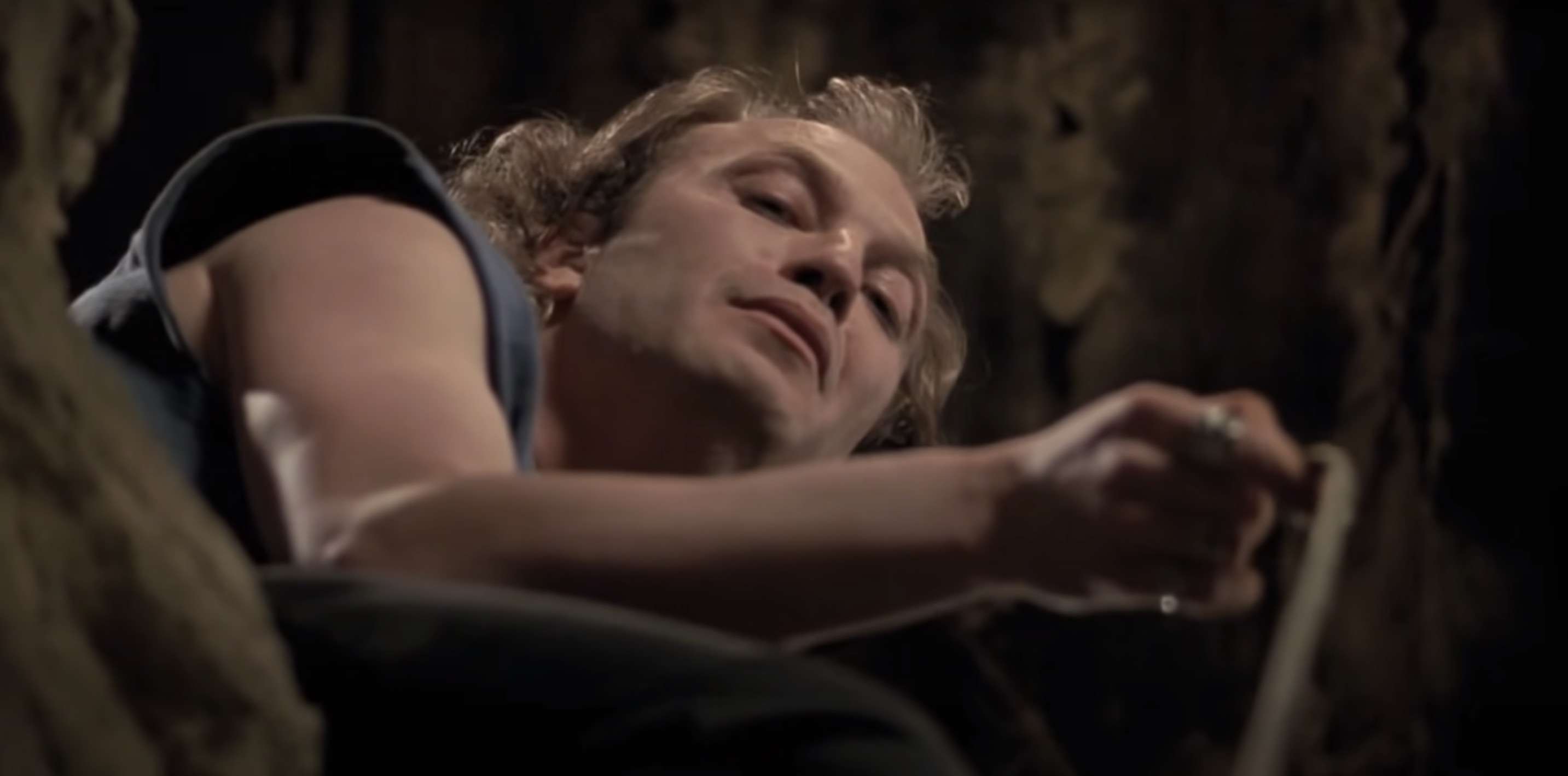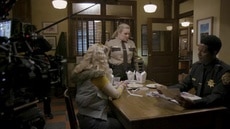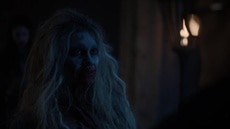Create a free profile to get unlimited access to exclusive videos, sweepstakes, and more!
30 years ago, The Silence of the Lambs added to cinema's trans legacy whether it meant to or not

The first movie my partner and I watched together was The Silence of the Lambs. It was one of her favorites, I hadn't seen it in a while, it just happened to be on TV, and so we watched it. Partway through the film, she turned to me and said, "Are you going to be OK watching this?" I looked at her, confused. I didn't know what she meant. "Y'know," she said, "because Bill... with the women."
At this point, I should probably mention that I'm transgender. But I was still surprised at my partner's concerns because I've never really thought of Buffalo Bill as being transgender; in fact, the movie explicitly states that he's not. Yet his arc is undeniably one rooted in transness — becoming a woman is central to his motivations. As The Silence of the Lambs' 30th anniversary approaches, it's clear that the film is a major tentpole in the evolution of transgender cinema. As much as it wants to keep the "T" word at length, its transgender tropes make it part of the trans cinematic legacy. Thirty years on, it can be looked upon as a turning point, if only a minor one.
For those who've maybe never seen Silence or simply need a reminder, Buffalo Bill is the movie's central villain, a serial killer who targets women so he can skin them and make a flesh suit for himself from that skin. Despite multiple instances where several characters — in both the movie and novel by Thomas Harris it's based on — confirm Bill is not trans, he still essentially kills women to be a woman, and so it's hard to entirely separate him from transness. When the film was first released in 1991, very little was made of this angle, publicly. Trans issues were not a mainstream topic, and so Bill was positively critiqued as a villain: for the creepiness of his drawl, his contrast to Anthony Hopkins' Hannibal Lecter, his eerie presence. There was some backlash from queer activists, including a protest at that year's Oscars ceremony where The Silence of the Lambs won the five major awards for Picture, Director, Actor, Actress, and Adapted Screenplay. However, with LGBTQ+ rights considered a fringe issue in the early '90s (and trans issues themselves a niche of overall LGBTQ+ rights), these protests made no real dent in the film's success, critically or commercially.
The Silence of the Lambs wasn't really thought of as a trans film, so it's only in rewatching it decades later with renewed context — for example: when my partner watched it with me for the first time — that the transness at the heart of the movie becomes apparent.
Much like Silence, many of the earliest trans roles in cinema aren't really "trans" either, but are based around the idea of a body swap. Typically, these focus on men either literally in the body of a woman or forced to wear the clothes of a woman while acting clumsy, manly, ungainly, and generally hamming the situation up for laughs while tottering around in heels. It's much closer to drag than it is to being trans, and as a result, these movies usually avoid anything to do with being trans at all; they're just mocking a supposedly comedic situation for laughs. However, in many people's eyes and throughout cinema, it's impossible to fully divorce the idea of being trans from the idea of wearing the "opposite" gender's clothes. Even without needing the terminology, it's clear that early cinema saw transness as something to be laughed at and never understood, much less accepted.
Alongside this mocking, of course, came the fear. In our media, as well as in our newspapers and in the corridors of power, trans people were both the silly butt of the joke and deranged, violent freaks. So while some films — Risky Business, I Was a Male War Bride, Boy! What a Girl, all the way back to 1901's The Old Maid Having Her Picture Taken — were happy to point and laugh at trans people, others were keen to point out they couldn't be trusted. Psycho is quite similar to The Silence of the Lambs in that I'm not sure I'd say Norman Bates is actually transgender. However, of all the ways the film could have highlighted Bates' madness, it shows him dressing up in women's clothing. There's the extra context that the clothes belong to his mother, that she's dead, and he's been pretending to actually be her, but it still boils down to "dress up as a woman = this dude crazy."
Dressed to Kill, starring Michael Caine as a man dressing up as a woman to kill women, borrows heavily from Psycho, but embraces transness much more. In it, Caine's character Dr. Robert Elliott wants to have gender reassignment surgery, but their "male side" won't allow them to, so this spills over into murderous rage exacted upon other women. While it at least posits an actual reason for Elliott to be dressed as a woman over Bates' indistinct madness, it's also much more fierce in its view that being transgender makes you a violent threat to women.
Here's where The Silence of the Lambs comes back in. Much like Dressed to Kill, its antagonist is a man who wants to be a woman, and this leads him to kill other women. Where Elliott is motivated by jealousy, though, Bill favors practicality, killing women in order to make a skin suit for himself. This is particularly interesting, as these women do not fit the typical archetype of those stereotypically targeted by trans women in media. Usually, these women are slim, attractive, and white, as is the case in both Dressed to Kill and Psycho, as well as Terror Train, and several shorts in The Alfred Hitchcock Hour.
Ultimately, though, while both Dressed to Kill and The Silence of the Lambs understand "transness" as a concept, they both struggle with some pretty glaring misunderstandings.
Dressed to Kill posits a "male side vs. female side" of being transgender, along with the idea that one side might overrule the other, which is nonsense. Trans people are not two people in one, constantly fighting for dominance; even the idea of being "born in the wrong body" feels too vague and simplistic. Transness is defined as a sense of dysphoria in the body you were born in (or euphoria in the body of a different gender), though each individual trans person has their own, individual experience. The Silence of the Lambs meanwhile offers up the theory that Buffalo Bill is not transgender, he just thinks he is — which again, doesn't hold up to scrutiny for the very same reason.
Ultimately, The Silence of the Lambs tells a story built around the most overused and inaccurate trans tropes, even if it does try and wriggle out of actually using a transgender antagonist. It's not good representation by any stretch; there's a reason it's a controversial depiction to this day. But Silence does at least build on what came before, and 30 years later, a lot more films have gone further still.
Trans villains have been less prevalent in recent years, replaced by sympathetically framed stories of trans tragedies, which take trans people from horror antagonists to drama victims. The Crying Game, released just one year after The Silence of the Lambs, was the first major hit in this trans tragedy "genre," and tells a story of love and betrayal during the Irish Troubles era. It's the least tragic of the four major movies to explore in this category, as well as being the only fictional one. Unfortunately, despite being particularly progressive for its time, one of its biggest legacies is the scene in which a trans woman's (played by Jaye Davidson) partner first sees her penis and immediately throws up; the scene has since been parodied several times, including in The Naked Gun, Ace Ventura, Family Guy, and The Hangover.
Alongside The Crying Game, there are 1999's Boys Don't Cry, starring Hillary Swank as murdered trans man Brandon Teena; 2013's Dallas Buyers Club, starring Jared Leto as a transgender woman living with AIDS; and 2015's The Danish Girl, starring Eddie Redmayne as Lili Elbe, one of the first people to undergo gender reassignment surgery. While all of these stories are based on true events, Leto's character is an entirely fictional insert into the movie. All four of these movies feature nuanced, respectful depictions of trans people, and that's a big step up from The Silence of the Lambs and the films that came before. However, though switching trans people from the perpetrators of violence to the victims is much more accurate to real-life statistics, it still pigeonholes trans stories in a way that proves they still need to evolve onscreen to become as nuanced as real-life trans stories are.
Because along with the fear and despair that have historically swirled around trans cinema, casting remains the biggest issue. All four of those aforementioned trans tragedy actors — Davidson, Swank, Leto, and Redmayne — are not trans but were nominated for Academy Awards for their transgender roles; Swank and Leto even won theirs. I'm not here to contest whether or not they deserve these accolades, but it's interesting that being able to convincingly play a different gender is considered an Oscar-worthy feat. Had an actual trans person been cast in any of these roles, they wouldn't have had to try to play a woman (or in Swank's case, a man), they would already be a trans woman or trans man, and would only have needed to play the character. If said hypothetical trans woman had won the Oscar for Dallas Buyers Club, she likely wouldn't have gone up on stage with a beard and a suit, as Leto did, to collect her award either.
When we see Leto collect his Academy Award for his role as a trans woman with that beard and suit, it further drives home the stereotype that trans women are just men in dresses. After all, isn't that what Leto did — just put on a dress and become a trans woman? Thankfully, in another positive step for trans cinema since The Silence of the Lambs, we're seeing pushback against this, with Scarlett Johansson and Halle Berry both stepping down from transgender roles where, like Swank, they would have played transgender men.
The past few years have also seen a rise in openly trans actors getting screen time, such as Jamie Clayton, Laverne Cox, Indya Moore, and Brian Michael Smith. While many trans roles — even with trans casting — still involve a lot of tragedy (Pose and Tangerine, for example), the fact that trans people are getting to tell their own stories marks a big positive step.
We've also seen Michael D. Cohen — an actor who transitioned in the '90s, has been on our screens since the early '00s, and came out publicly as trans in 2019 — provide a vivid example of how much safer and welcoming the environment has been made for trans people. Last December, trans cinema gained arguably its biggest star yet in Juno and The Umbrella Academy's Elliot Page. With most examples of trans cinema focusing on trans women, having an A-Lister like Page representing trans men could prove vital to furthering trans progress in media too.
The Silence of the Lambs was one of the earliest major movies to try and subvert some common trans tropes, though it couldn't escape the sensibilities of its time and still ends up falling into a lot of problematic pitfalls. Whether it accepts the label or not, it was one of the last films to feature the trans killer trope so overtly, and looking back on it 30 years later, we can see how it differed from the trans films before it, how trans cinema has improved since, and what work still needs to be done. Buffalo Bill might not be trans, but it seems like his legacy is.


























